An easy & quick way to make Mantou, Chinese steamed buns. My detailed instructions and tutorial video will help you to succeed.
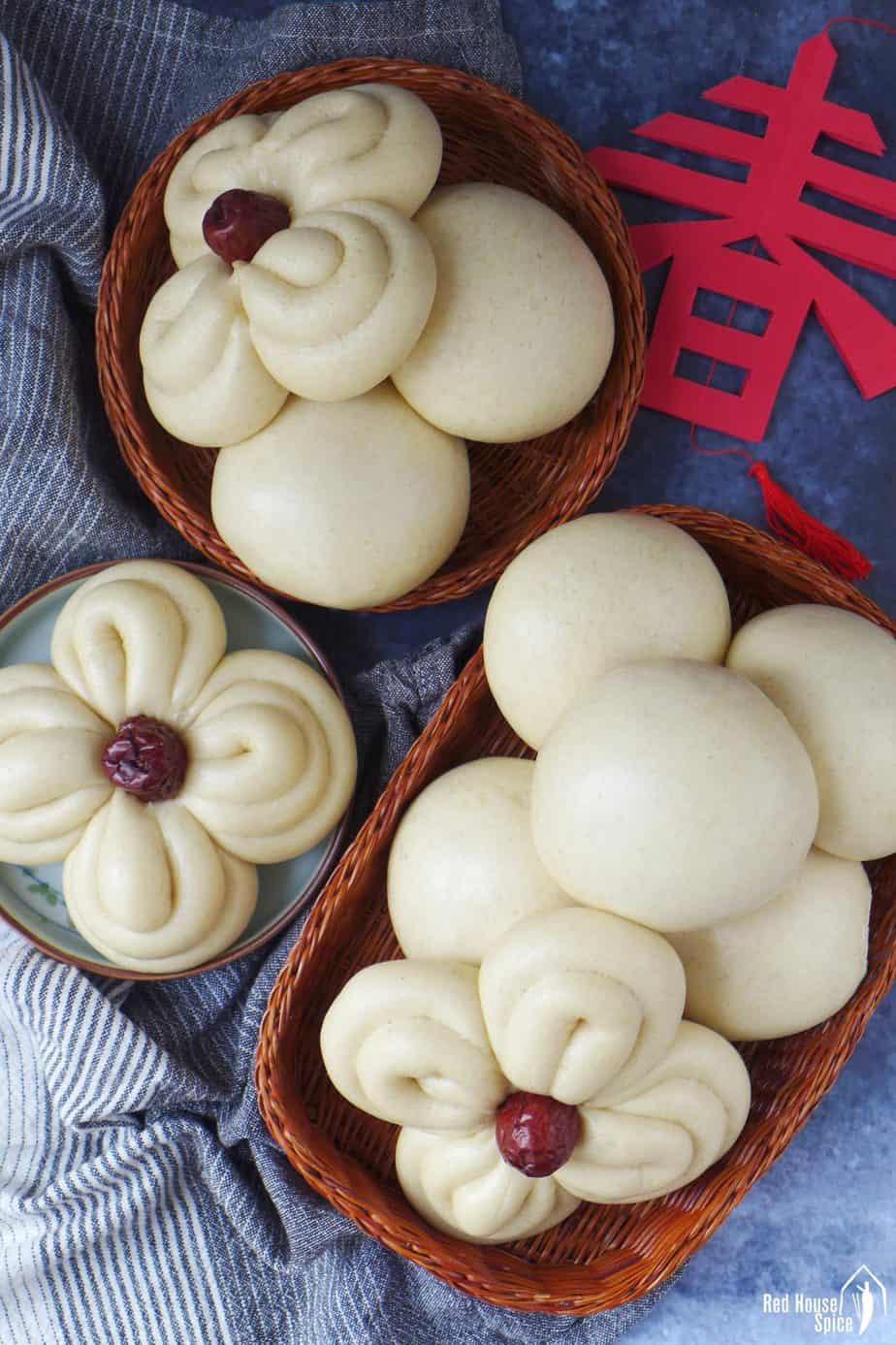
As the Chinese New Year (Spring Festival, 春节) is fast approaching, I’m sharing a nostalgic recipe: Mantou(馒头), Chinese steamed buns. This was an essential item that my parents used to prepare a few days before the most important festival of the year. We made dozens of them in a variety of shapes and enjoyed them throughout the entire holiday period.
Jump to:
What is Mantou?
Mántóu (馒头), also known as Mó (馍), refers to plain steamed buns which originated from China. They are usually made of white wheat flour, but other ingredients, such as corn flour, sweet potato, pumpkin, are sometimes added to the dough. As a popular staple, Mantou has a firm position on Chinese families’ dinner table.
In regions of northern China, Mantou is also a festive food prepared for the New Year. For this occasion, apart from regular round ones, they are made into all kinds of shapes, such as flowers, butterflies, animals, etc., and decorated with dried Chinese dates (Jujube).
Another popular variety of Mantou is Huā Juǎn (花卷, flower rolls), a layered bun seasoned with herbs, spices & oil.
A quick & easy recipe
Different from the traditional method which uses only yeast as a raising agent, my Mantou recipe calls for both yeast and baking powder which make the cooking process easier & quicker.
The yeast-only method makes great Mantou if you follow the double-proofing procedure: Leave the dough to rise until doubled in size. Shape individual buns then leave to rise again before steaming. The total resting time takes 1-2 hours depending on the room temperature (My post “Steamed Bao Buns” applies the traditional approach).
The “Yeast+baking powder” method requires only one proofing process. You can shape the buns right after the dough is formed. Just leave the buns to rise for about 30 minutes before steaming. It’s a better recipe in terms of efficiency and simplicity thus good for busy or novice home cooks.
Make the dough
Ingredients
My recipe makes 6 medium-sized round Mantou, or 4 flower-shaped buns topped with Chinese dates. Here are what you need in hand:
- 250g all-purpose/plain flour
- 1 teaspoon instant yeast
- ¾ teaspoon baking powder
- 1 tablespoon sugar, or to taste
- 130g lukewarm water
- 4 Chinese dates, for flower-shaped buns only
The process is pretty simple: mix flour, yeast and baking powder. Add water gradually. Combine then knead into a very smooth dough. It should be medium-firm thus doesn’t stick to hands or the work surface.
Knead by hand
It can be quite demanding to knead the dough to a very smooth texture by hand. To make the process easier, I always give the dough a little rest soon after all the ingredients are roughly combined. Then knead until the dough appears to be evenly smooth.
Use a stand mixer
Making the dough with a stand mixer is straightforward. Knead on low speed for about 8 minutes. Take the dough out and finish off by kneading by hand for 1 minute.
Ways to shape
Now the dough is ready. It’s time to form them into your preferred shape (No need to rest before shaping). Divide the dough into equal sections then work on one section at a time. For this recipe, I made them into two different shapes (Please refer to my tutorial video):
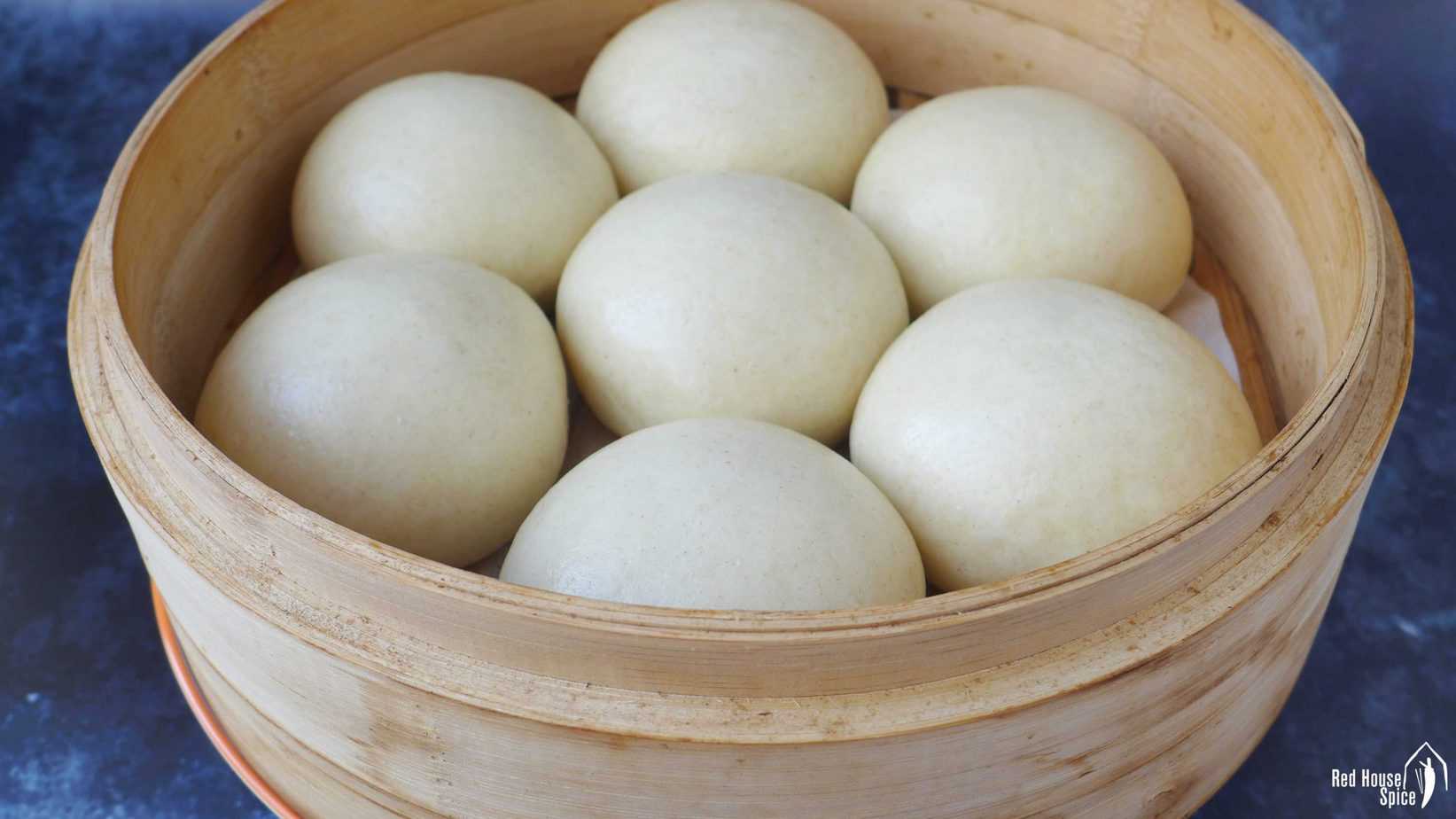
Regular round shape:
- Knead and fold the dough towards the centre of the ball without turning over. This will result in a smooth outer surface as you form the ball.
- Once you have completed this step rotate the ball between your hands to form a slightly raised shape.
Festive flower shape:
- Roll the dough piece into a long, thin rope. Fold both ends in a “J” shape in opposite directions. Then turn each end towards the centre of the rope until they meet.
- Take a pair of chopsticks placing one either side (in the centre) and squeeze to form a flower shape. Then place a Chinese date in the centre of the flower.
The resting process
My easy Mantou recipe only requires one resting process (unlike the traditional method explained in Steamed Bao Buns). After shaping the buns, place them into the steamer basket to rest. Make sure to leave ample space between each bun as they will be double in size after cooking.
The resting time required varies depending on the room temperature. It takes me 30 minutes in a room at about 25°C/77°F. So if it’s cooler in yours, extend the time a little and vice versa.
Well-rested buns should be slightly bigger (not doubled in size), very smooth on the surface. When pressed gently, the dough bounces back.
How to steam
Use a bamboo steamer when possible
Bamboo steamers work best when it comes to bun making. As bamboo is a “breathable” material, the steam doesn’t cause condensation. Some people also believe it passes some natural bamboo aroma to the buns.
Wrap the lid if using metal ones
If using a metal steamer, I suggest you wrap its metal/glass lid with a clean tea towel. This way the condensation created during the steaming process will be absorbed by the cloth instead of dripping onto the buns affecting their smooth appearance.
Line the basket or brush oil
To avoid the buns sticking to the steamer, you need to line your basket with steamer parchment paper, like the one I use in my images (They are available in Asian shops or major online shopping platforms). You may cut out circles using regular parchment paper and place them underneath each bun. Make sure they are bigger than the uncooked buns.
Alternatively, you can brush a thin layer of oil on the basket. It’s particularly effective when using metal steamers.
Troubleshoot: avoid bun collapsing
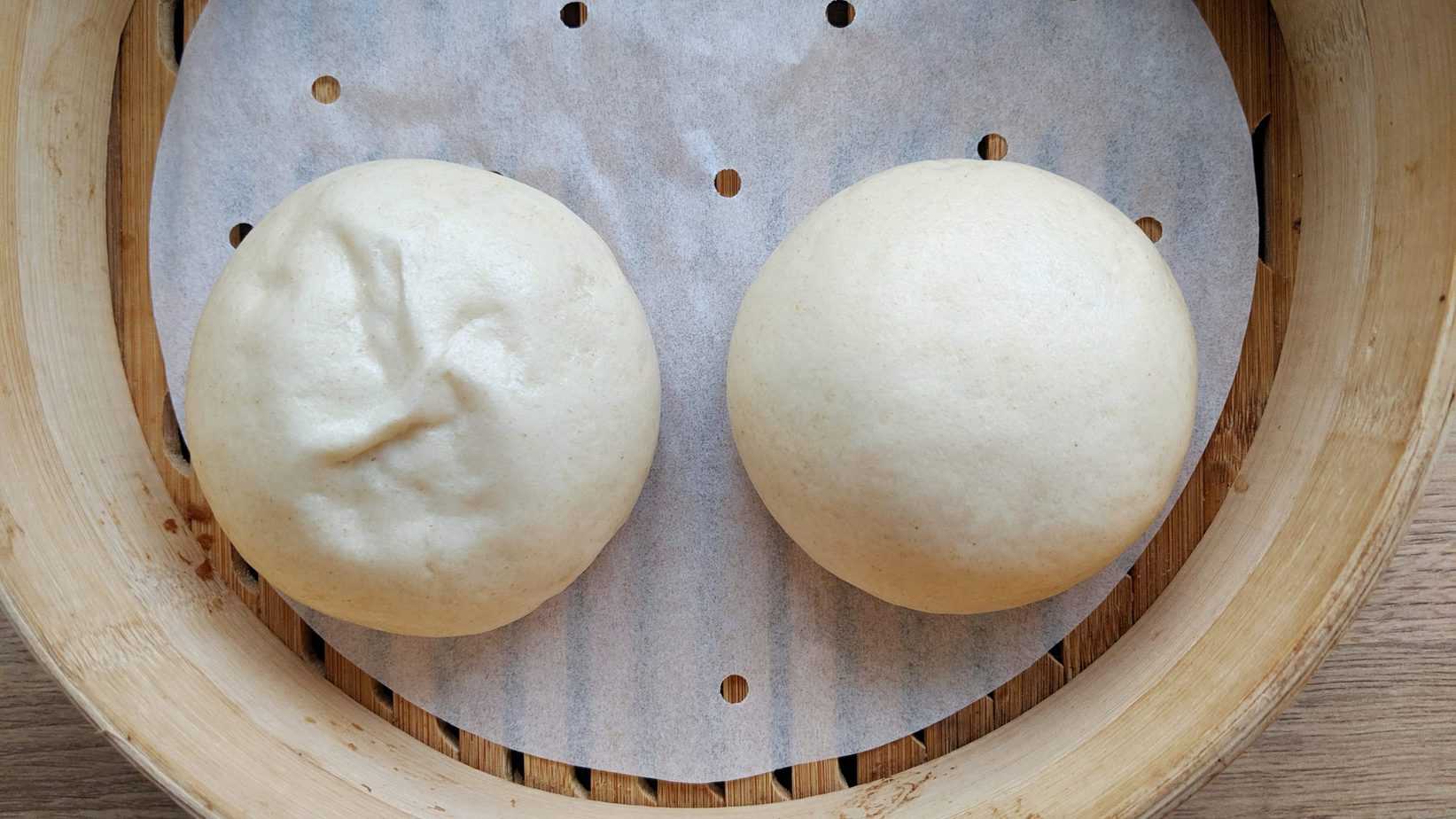
Are you keen to get the smooth, flawless finished look? If so, do not overproof the buns. As shown in the image above, the smooth one on the right was rested for 30 minutes before steaming. The wrinkled one on the left had a 45 minutes rest. While steaming, the excessive air caused by over proofing has created a big air pocket inside the bun. It collapsed once the cooking stopped.
By the way, some steamed bun recipes claim that to avoid the buns collapsing, you should wait for a few minutes before you uncover the steamer. Through numerous tests, I can tell you that this advice has no value. As long as you prepare and rest the dough properly following my recipe, you can immediately remove the lid after turning off the heat (just like how dim sum chefs do).
What to eat with
Mantou is the staple food of many northern Chinese household meals. So just like how you consume steamed rice, families would eat mantou with several savoury dishes, often accompanied by something less solid, such as congee, soups, etc.
It’s also a common breakfast item. You can spread with some savoury sauce, such as Chinese chili oil, fermented bean curd (Fú Rǔ/腐乳), black bean sauce (豆豉酱), etc. Or serve it like a burger, cut open then slide in a fried egg. Simple but yum!
When eating as a sweet snack, it’s very popular to dip mantou into condensed milk. Honey or jam is a great accompaniment too.
Store and reheat
It’s so handy to have some pre-made Mantou available when you crave them. Once your leftover buns are completely cool, place them in an airtight container/plastic bag. You may keep them in the fridge for up to 4 days or in the freezer for up to 2 months.
Steamed buns tend to go firm and hard when they are cold. To regain their softness and fluffiness, you can simply reheat them in the steamer. It takes about 4 minutes for fridge-kept ones and 6 minutes for frozen ones (no need to defrost).
Other bread recipes
Interested in other types of Chinese bread? Have a look at these recipes:
📋 Recipes
Love this recipe? Please leave a 🌟🌟🌟🌟🌟 rating and a comment. Thank you!
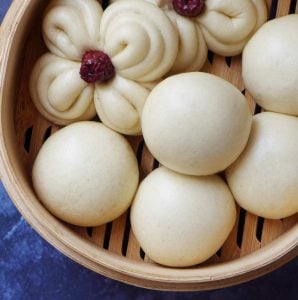
Mantou (馒头), Chinese steamed buns
Ingredients
- 250 g all-purpose - aka plain flour
- 1 teaspoon instant yeast - or dry active yeast
- ¾ teaspoon baking powder
- 1 tablespoon sugar - or to taste
- 130 g lukewarm water - see note 1
- 4 Chinese dates - for flower-shaped buns, optional
Instructions
Prepare the dough
- IF KNEADING BY HAND: Mix flour, yeast, baking powder and sugar. Add water gradually. Mix with chopsticks/spatula until no more loose flour can be seen. Combine and knead briefly into a dough. Leave to rest for 10 minutes (covered). Knead again until very smooth.
- IF KNEADING WITH A STAND MIXER: Mix flour, yeast, baking powder, sugar and water in the bowl. Knead on low speed until a very smooth dough forms (about 8 minutes).
Shape the buns
- IF MAKING ROUND BUNS: Divide the dough into 6 pieces (4 pieces if you prefer bigger buns). Knead and fold the dough piece towards the centre of the ball resulting in a smooth outer surface. Rotate the ball between your hands to form a slightly raised shape (Please refer to the video below).
- IF MAKING FLOWER BUNS: Divide the dough into 4 pieces. Roll one piece into a long, thin rope. Fold both ends in a “J” shape in opposite directions. Turn each end towards the centre of the rope until they meet. Take a pair of chopsticks placing one either side (in the centre) and squeeze to form a flower shape. Place a Chinese date in the centre of the flower.
Rest the buns
- Place the buns in the steamer basket (line with steamer parchment paper or brush a thin layer of oil to avoid sticking). Make sure to leave ample space between each bun.
- Leave to rest for around 30 minutes. Well-rested buns should be slightly bigger (not double the size) and very smooth on the surface. When pressed gently, the dough bounces back (see note 2).
Steam the buns
- Place the steaming basket onto a pot/wok filled with cold water. Start cooking with high heat (see note 3).
- Turn down to medium-low once the water is at a full boil. Count 10 mins from this moment (add 2 mins if your buns are bigger). Serve warm.
Store the buns
- Once completely cooled, place the buns in an airtight container/plastic bag. Keep in the fridge for up to 4 days or in the freezer for up to 2 months.
Reheat the buns
- Steam fridge-kept buns for 5 mins. If frozen, steam for 7 mins (without defrosting).
Video
NOTES
NUTRITION
NUTRITION DISCLOSURE: Nutritional information on this website is provided as a courtesy to readers. It should be considered estimates. Please use your own brand nutritional values or your preferred nutrition calculator to double check against our estimates.

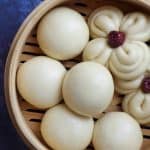


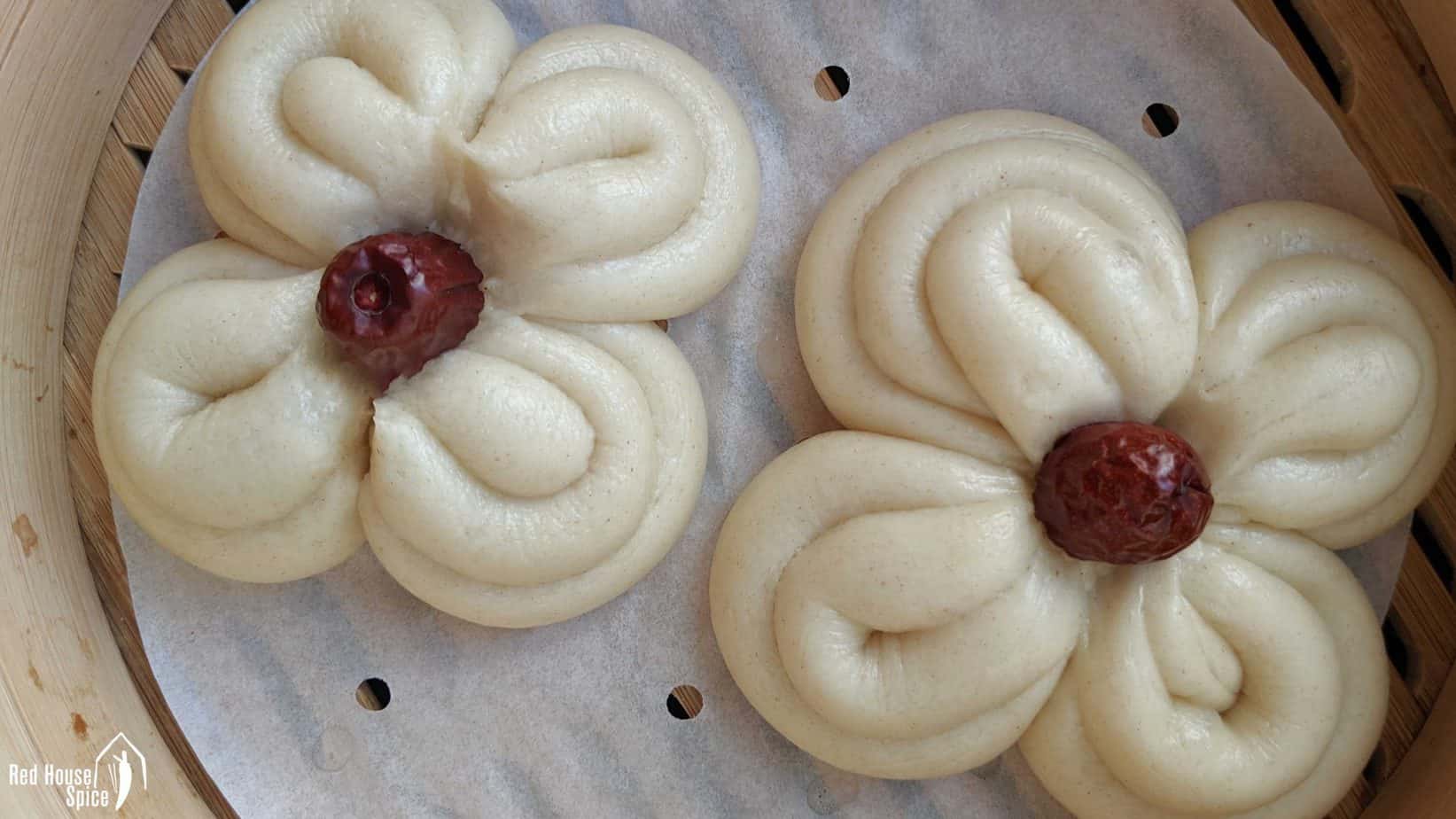
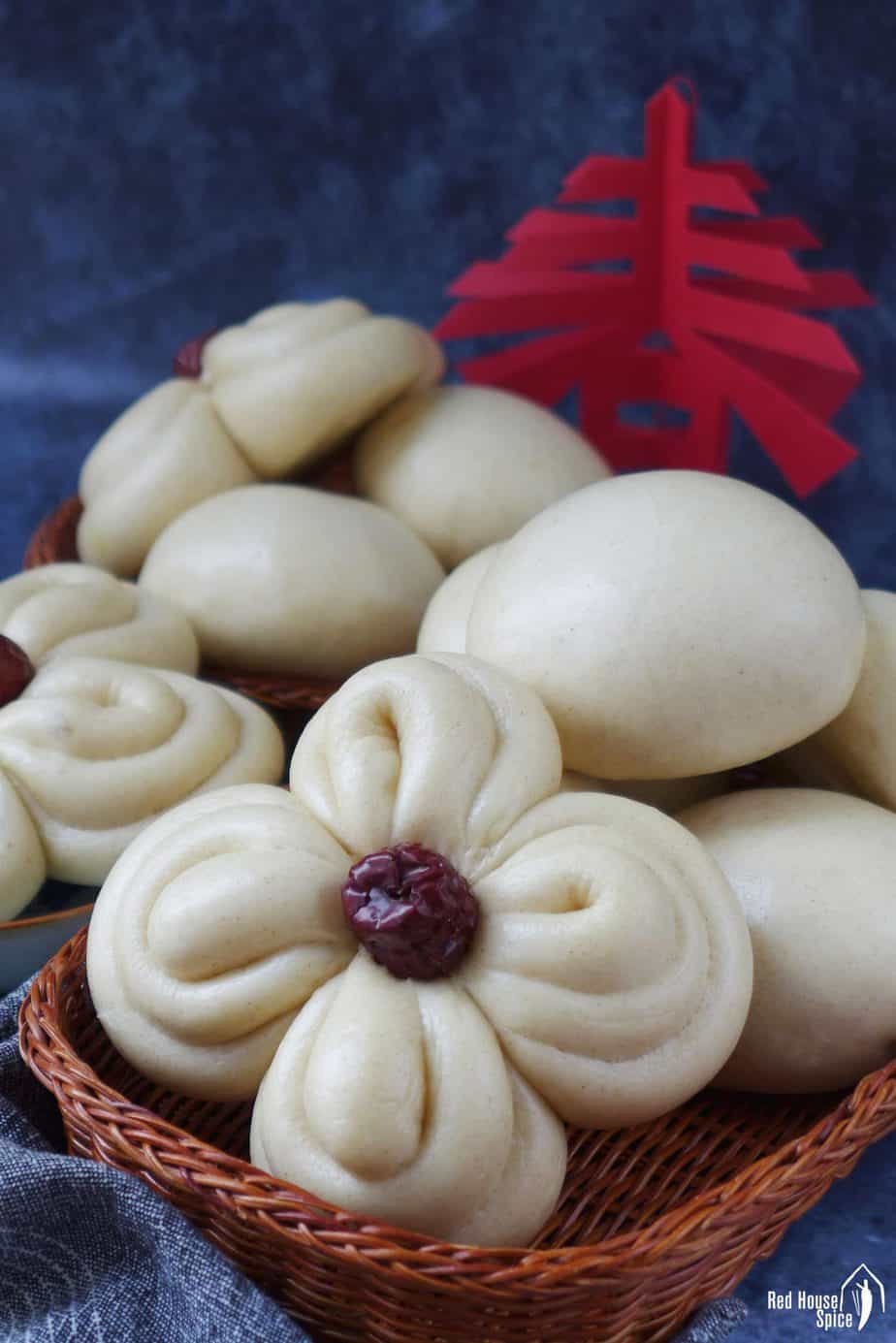
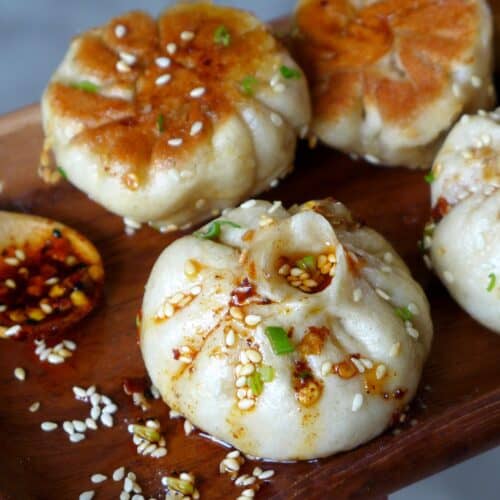
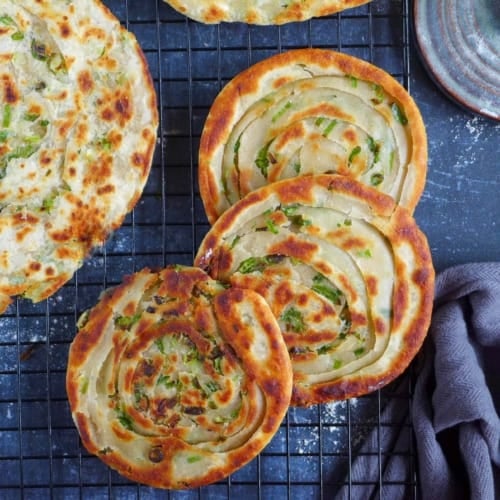
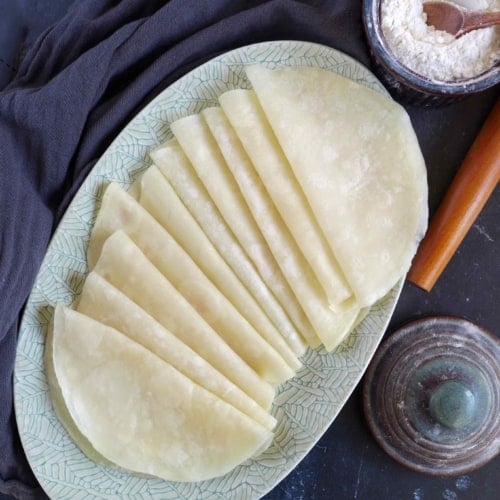
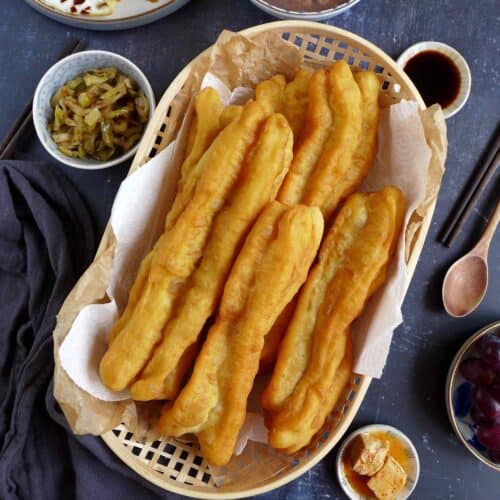
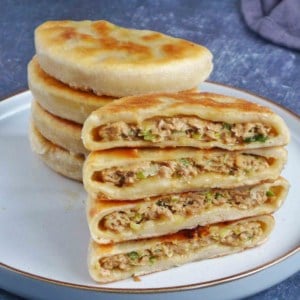
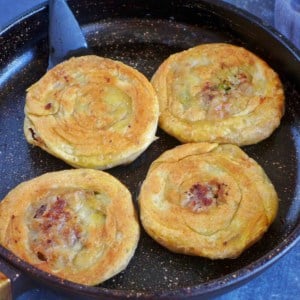
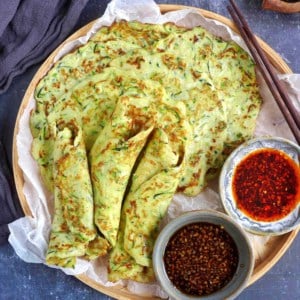
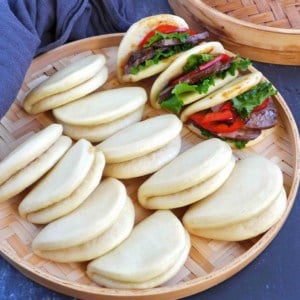
Just made these this morning. Didn’t have all-purpose flour just bread flour but it still came out pretty good.
If I wanted to mix in something, like green onions, at what point should I add them? During the kneading process?
Hi Dan! If you wish to add green onions into the dough and have them evenly distributed, you will need to put them in along with all the ingredients (before kneading). Otherwise, I highly recommend you check out my recipe for “Green Onion Flower Rolls“.
Cool thanks!
I’m slowly working my way up to full-on char siu bao. I think I have a decent handle on the filling part, but it’s the bread that has been the mysterious element until now. My mother used to make them when I was a kid and it seemed like a very involved process at the time (she was making the bread the traditional way). Once I feel confident with it all I will bring her a nice basket!
Can i use bread flour instead of AP flour?
You can use bread flour but the finished texture won’t be as fluffy/soft.
Thank you for your recipe, it was one of the few that uses AP flour. I kneaded by hand and what a workout, but resulted in great steamed buns! Relatively quick to make too. Definitely a great base recipe. I will add more sugar, for a more slightly sweeter bun next time. Even so, they came out soft, pillowy, with shiny tops! Thank you!
You are welcome Janet! Yes, add more sugar if you like it sweeter. You may also replace water with milk for an extra subtle flavour.
I tried your recipe awhile ago. I do not know where I got it wrong, mine came out dense. ><
Would greatly appreciate your help.. Thank you in advance!
Sorry to hear that Sophie! I’m not sure if you have followed my recipe PRECISELY. It could be that your dry yeast wasn’t active enough (it loses effectiveness over time) or that you didn’t allow enough time to rest the dough (it takes a longer time in the cooler environment).
thank you so much for taking time to reply.
I am determined to do this recipe again until I get a fluffy bun. But may I ask, how long does it take for you to knead until you get a soft/smooth dough?
Again thank you so much!!! ^_^
As I’ve mentioned in the recipe, it would take about 8 mins if using a stand mixer. If by hand, roughly form the dough and leave to rest for 10mins. Then knead agian. It takes me no more than 2-3 mins to make it smooth.
Thanks so much for this recipe! I can’t wait to try it – is it possible to substitute milk for water in this recipe? We generally like our mantou to be slightly sweet so I was thinking of using milk instead of water and increasing the sugar. This is my first time making mantous though so I hesitate to make too many changes.
Hi Chrissy! Yes, you can replace water with milk. In this case, you might need to adjust the water volume a little as they have slightly different water absorption capacity.
I love this recipe. It comes out so well!
Three things:
1. I have seen some spiral mantou. I think it may be called 双色馒头. Is this common in China?
2. I tried getting to this recipe from the bar at the top. Recipes -> Bread & Pastry but I could not find it.
3. Do you think it would be possible to add garlic or garlic powder to the buns? I love garlic and I think it would taste good.
Hi Alicia! Yes, you can find spiral, bicolour mantou in China. Sweet potato, pumpkin, matcha are usually used to create colours.
Thank you very much for pointing out the error in my category setting. I’ve edited it.
I’ve never thought of making the buns garlicky. Interesting idea! Maybe garlic powder and a little salt to the dough? I might give it a try one day.
Hi. Thanks a lot for the recipe. I love mantou and so do my kids. I have been trying to learn to make the mantou, but it was never successful. Will try your recipe. I have pau flour at home. Can I use it instead of the all purpose flour? Will the weight be the same? Thanks.
Yes, you can use pau flour instead. You might need to slightly adjust the water volume. The finished dough should be smooth & medium firm. Watch my video to see what the texture/firmness is like.
Hi Wei
I’ve made Mantou’s before but always found they didn’t turn out right and took too long proofing. But I’ve just tried your recipe and method. I was amazed how lovely the buns turned out. Some of mine did dip on the top but some were smooth. Thank you so much for sharing your recipe and very important notes. My husband was very pleased with me as my buns don’t come out nice and I stopped making them. You’ve given me confidence to make them again.
Can I ask, can I add fillings in them? Custard filling? Have you made it before?
Thank you Ema for letting me know my recipe worked well for you. Yes! You can make custard buns using the same dough. I often make red bean paste stuffed buns. Yum!
I’ve just made some. Awesome! The texture is perfect and so fluffy. Will definitely make more. Thanks for sharing!
So happy to hear that!
Thank you so much for testing the different methods Wei! I’ve been looking for a recipe that had some science behind it because I’ve tried mantou many times without success. I look forward to trying this!
Hi Xian, it’s my great pleasure to share! I know how frustrating it can be if you wish to produce perfect Mantou. Good luck!
I can’t wait to try out this recipe,
I only have fresh yeast, can I use this instead of dried active yeast. Thanks for sharing.
Fresh yeast is fine too. Happy cooking!